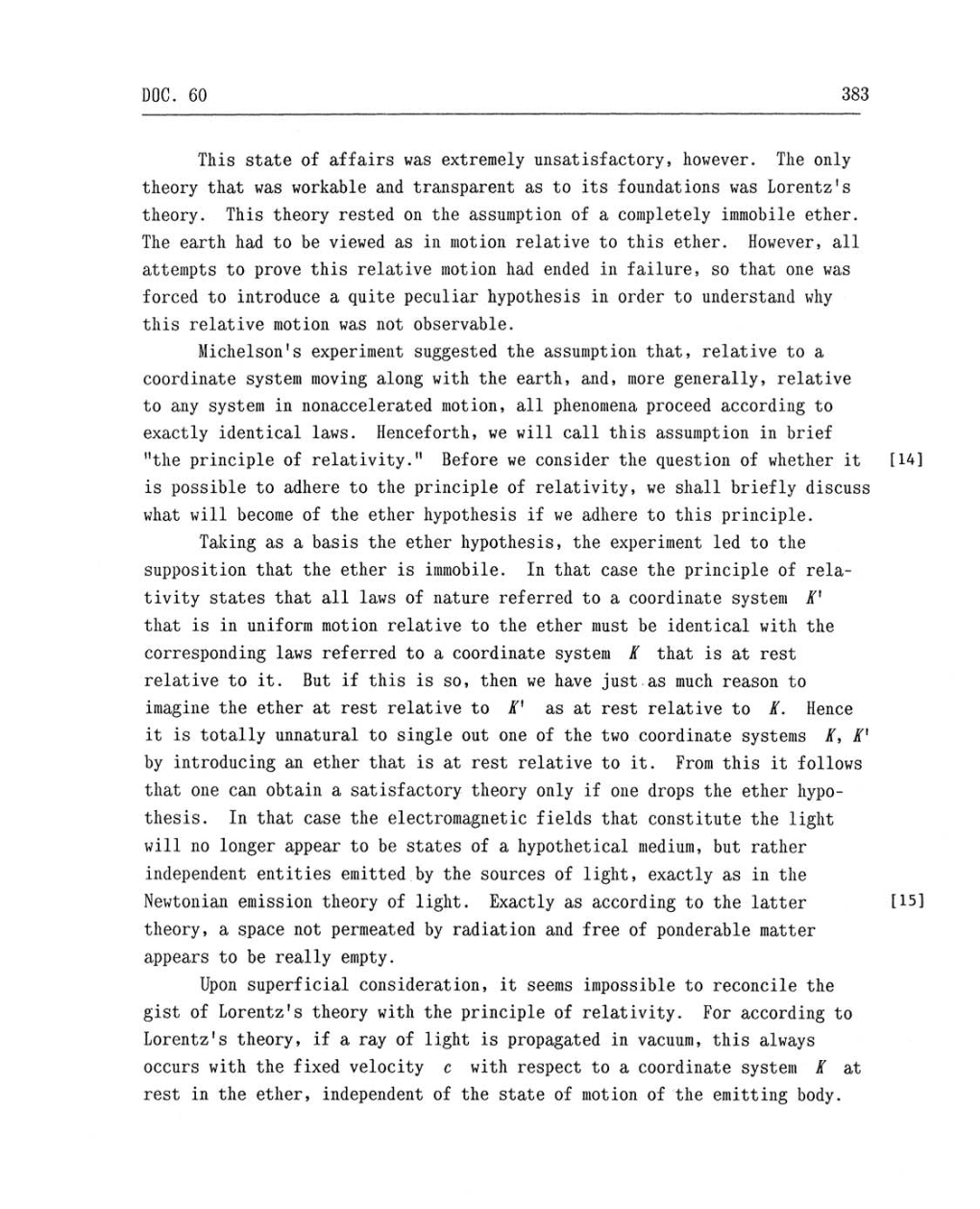DOC.
60
383
This
state
of affairs
was
extremely
unsatisfactory, however.
The only
theory
that
was
workable and transparent
as
to
its foundations
was
Lorentz's
theory. This
theory
rested
on
the
assumption
of
a
completely
immobile
ether.
The
earth had
to
be viewed
as
in
motion
relative
to
this ether.
However,
all
attempts
to prove
this
relative motion had ended in failure,
so
that
one was
forced
to
introduce
a
quite peculiar
hypothesis
in order
to understand
why
this relative
motion
was
not
observable.
Michelson's
experiment
suggested
the
assumption
that, relative
to
a
coordinate
system
moving
along
with the earth,
and,
more
generally, relative
to
any system
in nonaccelerated
motion,
all
phenomena
proceed
according
to
exactly identical
laws.
Henceforth,
we
will call
this
assumption
in brief
"the
principle of
relativity."
Before
we
consider the
question
of whether it
[14]
is possible
to
adhere
to
the principle of
relativity,
we
shall
briefly
discuss
what
will
become
of
the ether
hypothesis
if
we
adhere
to
this principle.
Taking
as a
basis the ether
hypothesis,
the
experiment
led
to
the
supposition
that the ether is
immobile.
In that
case
the
principle of
rela-
tivity
states
that all
laws
of
nature
referred
to
a
coordinate
system
K'
that is
in
uniform
motion
relative
to
the ether
must
be
identical with the
corresponding
laws
referred
to
a
coordinate
system
K
that is
at
rest
relative
to
it.
But
if this is
so,
then
we
have
just
as
much
reason
to
imagine
the ether
at rest
relative
to K'
as
at rest
relative
to
K.
Hence
it is
totally
unnatural
to single out
one
of the
two
coordinate
systems
K,
K'
by
introducing
an
ether that is
at rest
relative
to
it.
From
this it follows
that
one
can
obtain
a
satisfactory
theory only
if
one
drops
the ether
hypo-
thesis. In that
case
the
electromagnetic
fields that constitute the light
will
no
longer appear to be
states
of
a
hypothetical
medium,
but rather
independent
entities emitted
by
the
sources
of light,
exactly
as
in the
Newtonian
emission
theory
of light.
Exactly
as
according
to
the latter
[15]
theory,
a
space
not
permeated
by
radiation
and
free of
ponderable
matter
appears
to be
really
empty.
Upon
superficial consideration, it
seems
impossible
to
reconcile the
gist of Lorentz's
theory
with the
principle
of relativity.
For
according
to
Lorentz's
theory,
if
a
ray
of light is
propagated
in
vacuum,
this
always
occurs
with the fixed
velocity
c
with
respect
to
a
coordinate
system
K
at
rest
in the ether,
independent
of the
state
of motion of the emitting
body.
